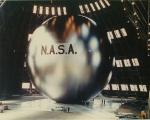Billboards and water bottles that produce drinking water out of thin air might look like breakthrough inventions, yet the principles behind them are very basic, and the technology possibly very old. Until very recently, it was believed —based on a discovery made in 1900 by Russian engineer Friedrich Zibold— that the ancient Greeks had successfully recovered water from atmospheric water vapor on a scale large enough to supply water to the city of Theodosia, now known as Feodosia, situated in the Crimean peninsula, in Ukraine.
Zibold was clearing forests in Crimea when he discovered thirteen large piles of stones. Each conical stone pile was 10 meters tall and covered over 900 square meters. He also found fragments of 3-inch diameter terracotta pipes around the piles leading to wells and fountains in the city. Zibold concluded that the stacks of stone were dew condensers that supplied the city with water. He calculated that each “air well” produced more than 55,400 liters of water each day.

Achille Knapen’s Air Well in Trans-en-Provence, France. Photo credit: Michel Royon/Wikimedia
Read more »© Amusing Planet, 2016.









Comments